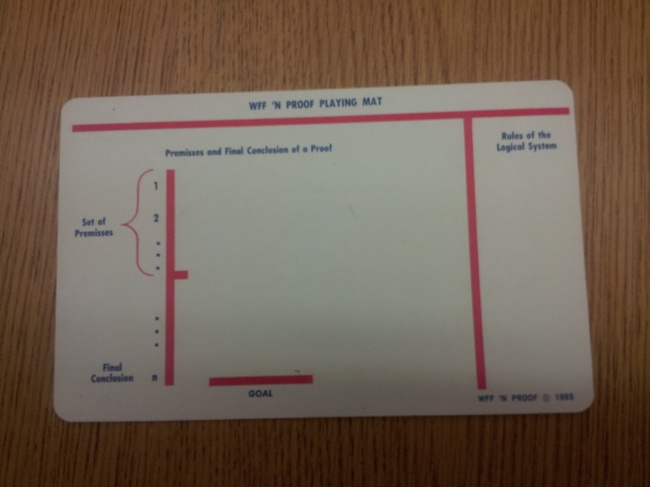BASIC WFF'N PROOF: A TEACHING GUIDE
WHAT IS WFF'N PROOF?

WFF 'N Proof is a game that was created by Professor Layman Allen to teach law students the fundamentals of symbolic logic. The original game was developed in 1961, it focuses on teaching logic skills. A resource game with a format of play between 2-3 opponents. There are two games played i competition which is a basic and regular Wff'n Proof. They use rules, logic type proofs and formal styled exchanges for assessment.
In the past, studies show that rigorous play and applications can affect IQ scores of 21 points. Problem-solving, improved order thinking and reasoning skills are heightened. The basic game is a great tool to add to your arsenal of educational tools.
In the game, students must be able to recognize a WFF and use seven different Rules of logic to manipulate those WFFs into a proof. Games are played in groups of two or three. The first player rolls the cubes and sets a WFF as a Goal. The goal is the conclusion of a proof. Each student then tries to construct a proof that ends with the goal. The Solution to the goal is the premises which they started their proof with, and the rules they used to get to the goal.
Players take turns moving to the Essentials, Permitted Premises, or Permitted Rules sections of the mat. Any cube moved to Essentials must be used in any Solution, and must be an essential part of that solution; any cube in Permitted Premises may be used as part of a premise; any cube in Permitted Rules may be used as part of a Rule. Thus the players themselves shape the Solution, forcing one another to create new Solutions in response to moves.
At any point a player may challenge the last mover, if they feel the last mover has made a mistake. There are two types of Challenges. After a challenge, at least one player must show a correct Solution on paper. The scoring goes like this:
1. The player who wins the challenge scores 6 points.
2. The loser of the challenge scores 2.
In the advanced, or Regular version
of the game, additional rules of logic are used, and students may use
sub-proofs as part of their solutions. This is the most complex of
the Academic Games, because it demands an advanced knowledge of symbolic logic. It is also the most rewarding because the knowledge and logical discipline
gained by mastering the game is applicable to many diverse fields later in
life.
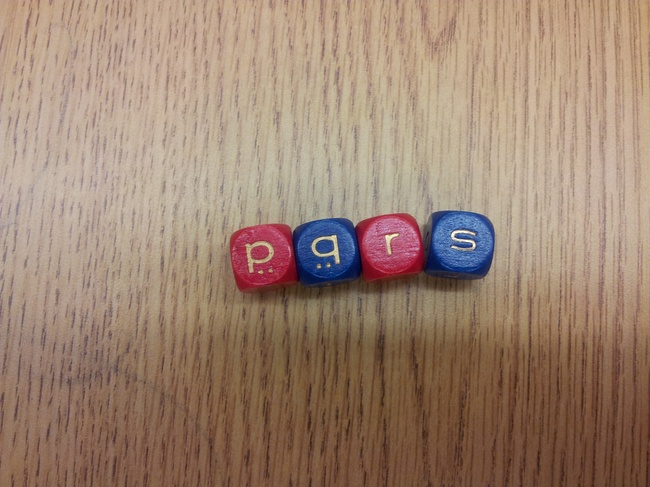
WHAT IS A WFF?
WFFs are Well Formed Formulas - expressions that are to symbolic logic what sentences are to English. The following are a list of the single cube WFF's:
- s
- p
- q
- r
WFFs are also grouped together with various sets of combinations. Each group of WFFs have there own unique set of rules.
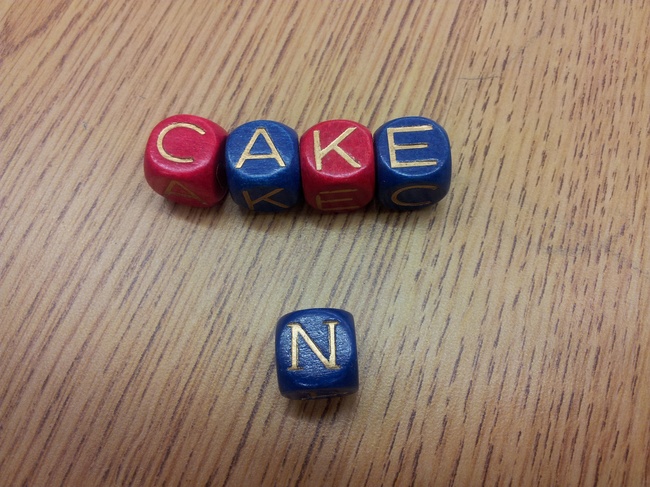
WHAT IS A CAKE LETTER?
C: requires two wf's
A: requires two wffs
K: requires two wffs
E: requires two wffs
N: requires one wf's
WHAT IS A PROOF? RULES?
A proof uses premises and requires students to use game rules to construct and deconstruct wffs to solve for a group common goal. Every line in a proof must explain each wff and the rule that created it.
IN RULES
Ai: need wff1 or wff2
( r-->Asr; s-->Asr)
Ki: need wff1 and wff2
(r, s-->Krs)
Ei: needs 2 cuffs
( Csr, Crs-->Esr; Csr, Crs-->Ers)
OUT RULES
Co: need wff1 to get wff2
(Cpr, p -->r)
Ko: get wff1 or get wff2
(Krs-->r ; Krs-->s)
Eo: get either cuffs
( Eqp-->Cqp; Eqp-->Cpq)
R: repeat
(r-->Krr)
MLAG RELATED WEBSITE: MICHIGAN LEAGUE OF ACADEMIC GAMES
www.mlagonline.com
http://wffnproof.com/home
WFF'N PROOF RULES
EVALUATION / RECOMMENDATIONS
This game has incredible skill building opportunities. It sharpens the learners thinking, organization skills and it defines logic in a game format. There are further applications like it prepares students for geometry type proofs and it reinforces student logical sequencing.
I strongly recommend this game to teachers and students. Teachers will find that it helps students become more confident and improves logical procedures in math problem solving.
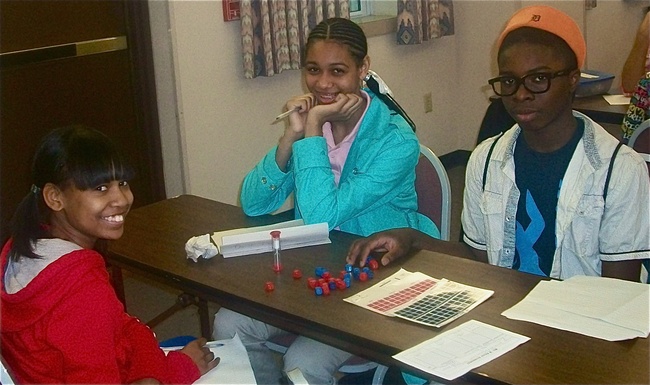
WFF'N PROOF COMPETITION
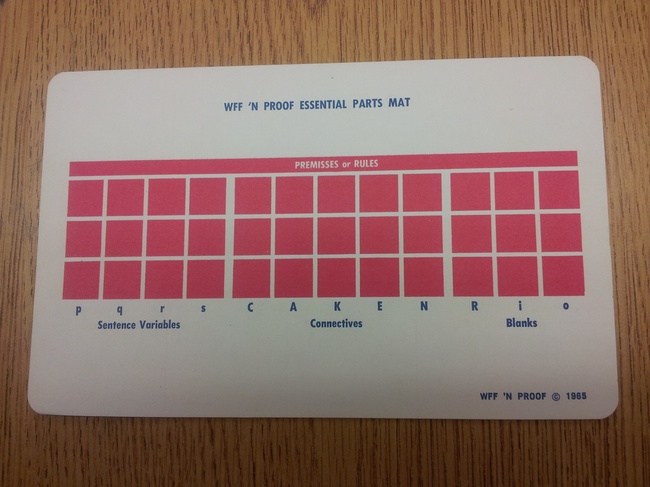
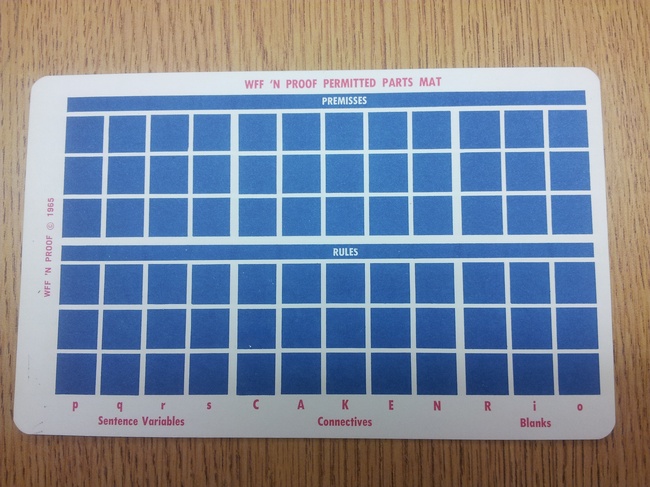
PLAYING MAT
